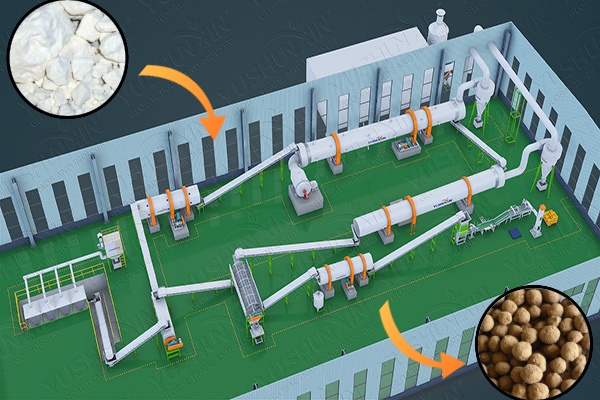Limestone pellets are an essential product in various industries, including agriculture, construction, and water treatment. The production of limestone pellets requires specialized equipment to ensure the pellets are of high quality and meet industry standards. Here are some of the essential equipment used in the production of limestone pellets.
Grinding Equipment
Before limestone can be turned into pellets, it must first be ground into a fine powder. Grinding equipment, such as ball mills or hammer mills, is used to reduce the size of the limestone. These machines use a combination of impact and abrasion to break down the limestone into a fine powder that can be easily formed into pellets.
Pelletizing Equipment
Once the limestone is ground into a fine powder, it is then mixed with water and other binding agents to form a wet mixture. This mixture is then fed into a pelletizing machine, which uses a combination of pressure and heat to form the mixture into pellets. There are various types of pelletizing equipment, including disc pelletizers, rotary drum pelletizers, and extrusion pelletizers. Each type of pelletizer has its advantages and is chosen based on the specific needs of the production process.

limestone pellets granulating production line
Drying Equipment
After the limestone pellets are formed, they must be dried to remove any excess moisture. Drying equipment, such as rotary granulate dryers or fluid bed dryers, is used to remove moisture from the pellets. The drying process is critical to ensuring the pellets are of high quality and can be used in various applications.
Screening Equipment
Once the limestone pellets are dried, they must be screened to ensure they are of the correct size and shape. Sieving machine, such as vibrating screens or trommel screens, is used to separate the pellets into different size fractions. This ensures that the pellets meet industry standards and can be used in various applications.
In conclusion, the production of limestone pellets requires specialized equipment to ensure the pellets are of high quality and meet industry standards. Grinding equipment is used to reduce the size of the limestone, pelletizing equipment is used to form the limestone into pellets, drying equipment is used to remove excess moisture, and screening equipment is used to separate the pellets into different size fractions. With the right equipment, limestone pellets can be produced efficiently and effectively for various industries.
